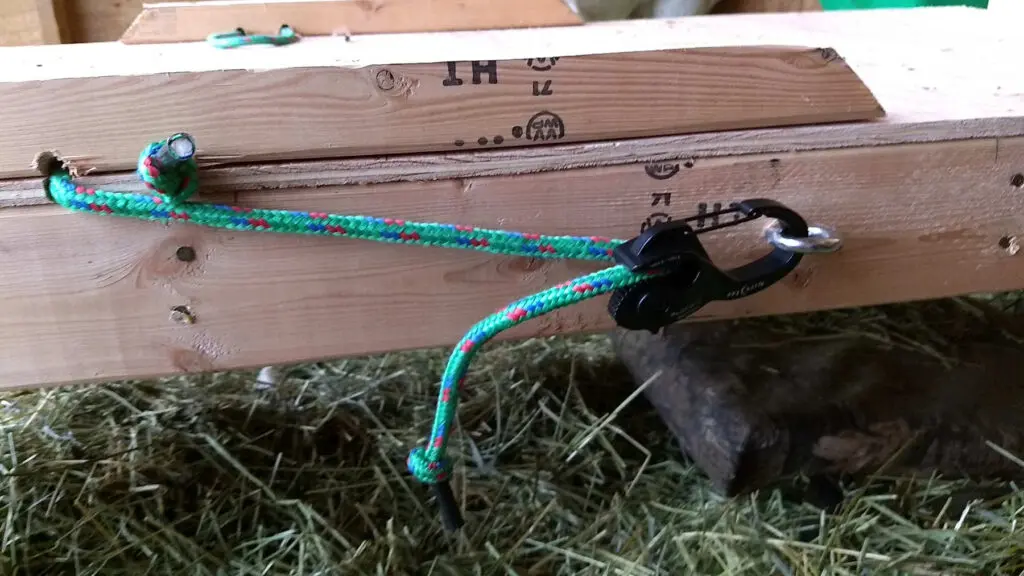Uncategorized
Let’s Get Started
Step 1
Fasten an 18″ 4×4 post 1 1/2″ from each end of a 48″ 2×4 flush and square with the tops.
Step 2
Repeat as above with the other side. These form the 4 legs and 2 long sides of the base.
Step 3
Fasten a 21″ 2×4 between both 4×4 posts, flush and square to the tops to complete the legs and box of the base. See image below.
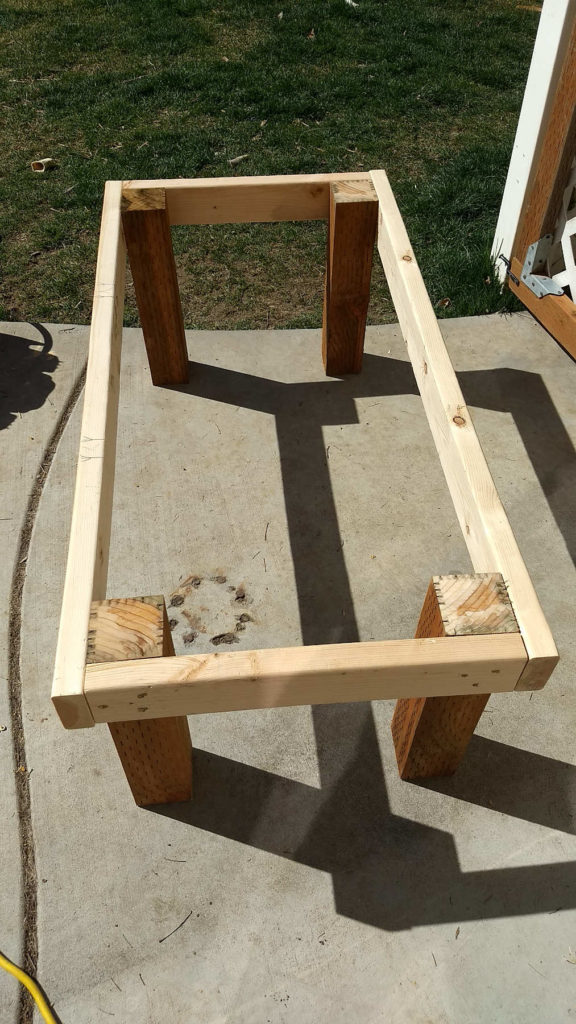
Step 4
Measure and mark 23 1/4″, 24 3/4″, 35 1/4″, and 36 3/4″ along both 48″ sides. These give you the outlines for where the supports go.
Step 5
Fasten 21″ 2×4 between the marks made above, square and flush with the tops along both 48″ sides. See image below.
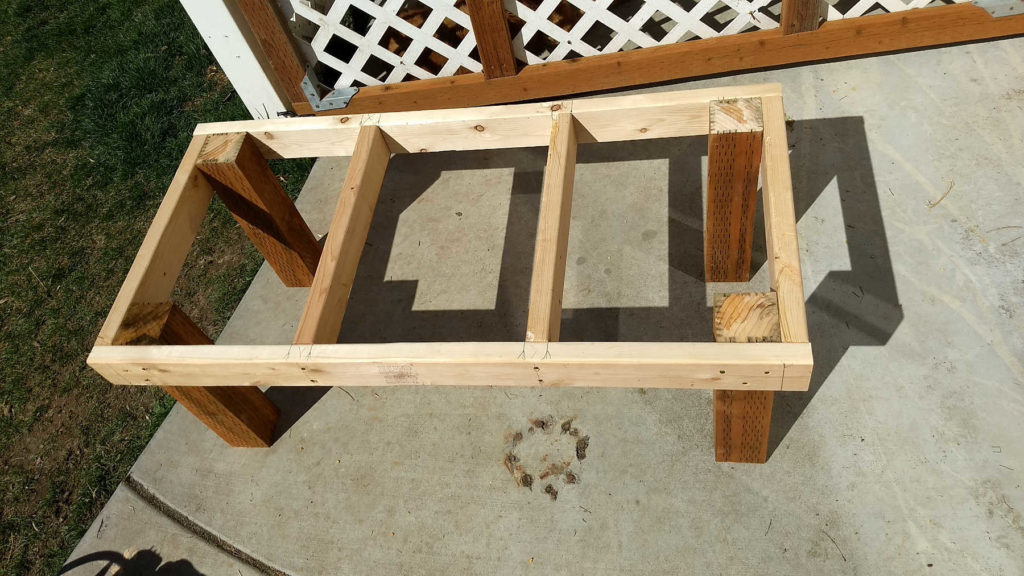
Step 6
Fasten a 24″ x 48″ sheet of plywood to the top of the frame fastening 4″ apart on all sides and over the middle supports.
Step 7
On one 24″ end, measure and mark 3 ½″, 7″, 8 ½ ″, 10 ¼ ″, 12″, 13 ¾ ″, 15 ½ ″, 17″, and 20 ½ ″. See image below.
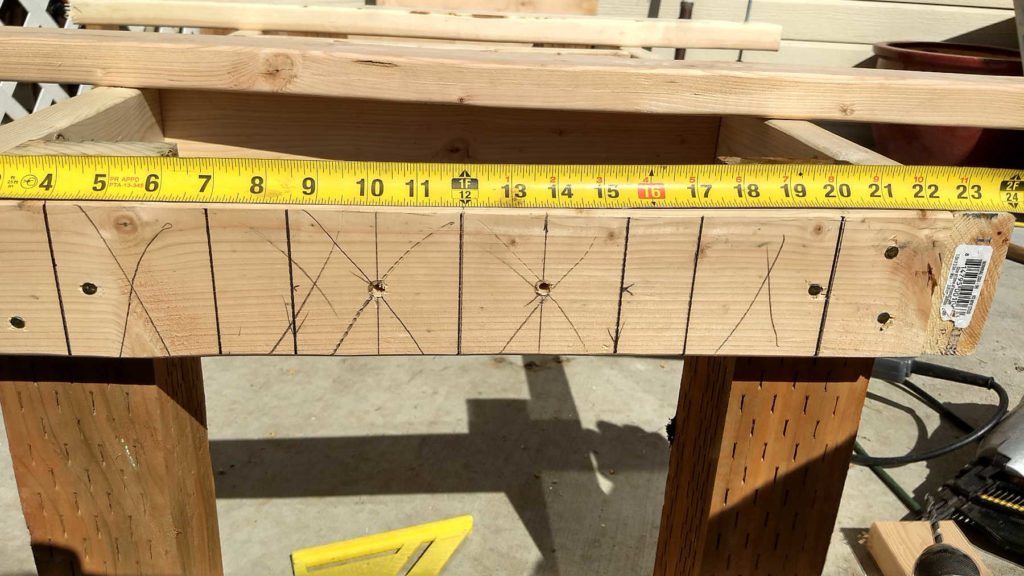
Step 8
Find center between the 10 ¼ and 13 ¾ marks. Drill the center with a ½ ″ bit.
Step 9
Make an angled cut removing a wedge 1″ thick tapering down to 3″ from the end of (2) 16″ 2x4s. This will leave a remainder of 1″ of material on the skinny side of the 2×4. See image below.
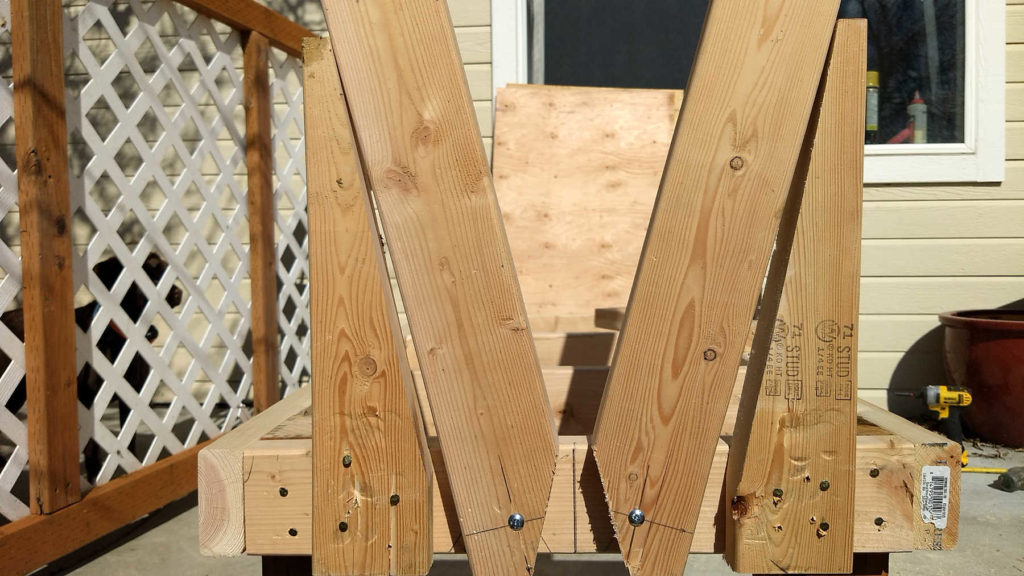
Step 10
Fasten the square end of a 16″ 2×4 with the angle cut between the 3 ½ ″ and 7″ marks, square and flush with the bottom. The wedge should angle down towards the center to form a V.
Step 11
Repeat with the second 16″ 2×4 angled cut between the 17″ and 20 ½ ″ marks.
Step 12
Cap both sides of the 16″ 2×4 uprights with (2) 17″ 2x4s.
Important: It’s recommended if using screws, to pre-tap the holes and use 3″ wood screws. Nailing or not pre-drilling the holes will likely cause splitting.

Step 13
Take (2) 42″ 2x4s and find the center 1 ¾″ from one end. Mark and drill with 1/2″ drill bit.
Step 14
Mark an angle from the center of the square end to 3″ up one side and cut.

Step 15
On the opposite (square) ends, mark 3″ down and 1 ½″ in on both 42″ 2x4s.
Step 16
From the drilled ends, measure up 19″ and 1 ½″ in on both 42″ 2x4s.
Step 17
Using a straight edge, connect the 1 ½″ marks to indicate the strip that will be removed for the head catchments arms. Using a pencil, draw rounded corners tracing the cuts.
Step 18
With a skill saw and sawzall, cut out the 1 ½″ strips from both 42″ 2x4s.
Important: Save these 1 ½″ strips for making the optional Hoof Trap System!
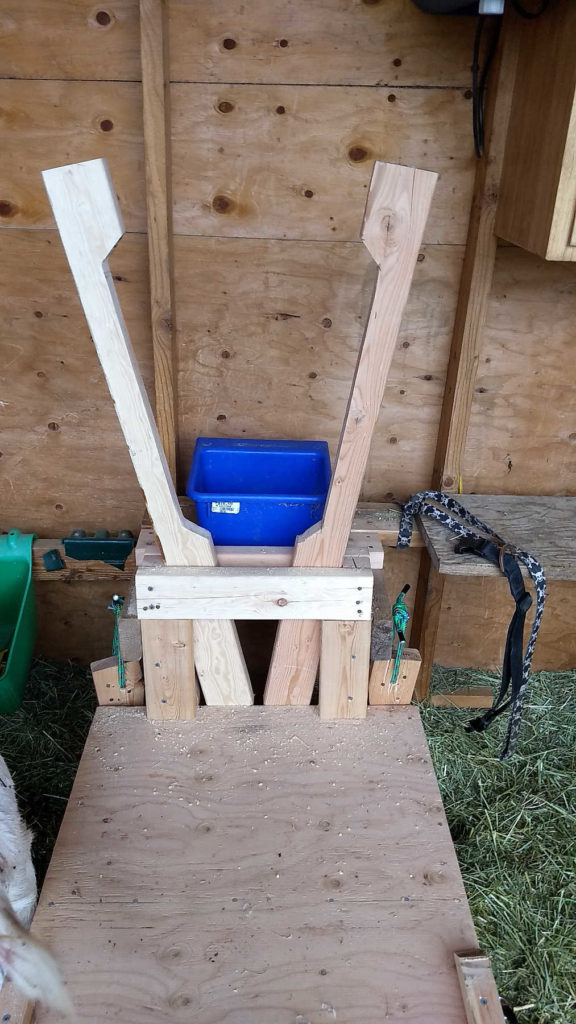
Step 19
Assemble the vertical arms by inserting them (cut outs facing each other) between the upright frames and bolting through the holes with 1/2″ bolts, washers, and nuts.
Step 20
The width of the upright frame is ideal for fastening to wall studs places 16″ on center. Arms can be added on either side of the upright frame with the addition of a feeding bucket. 16” arms with 20” pieces for the shelf connecting to the arms.
Step 21
For reinforcement, fasten 2 (one each side) 2 x 4’s cut at a 45 degree angle that is 16 ½“ in from short point to long point and place like it is pictured. This will solidify the upright and take out flex when a strong and “unwilling” goat is in the headstall.
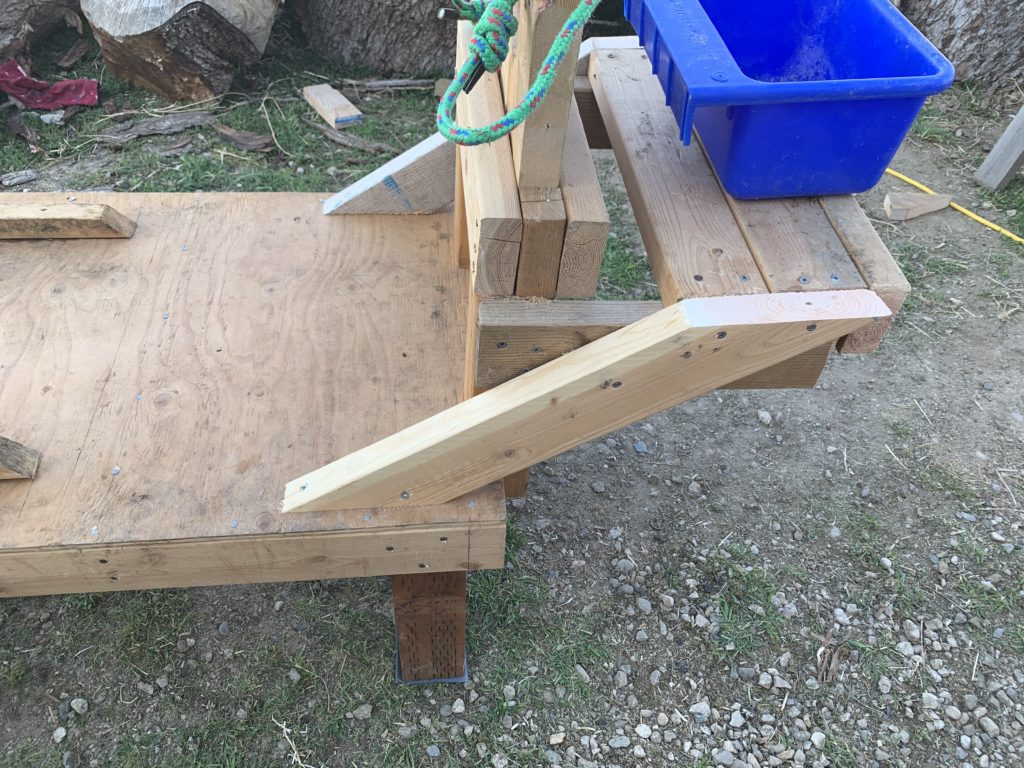
Step 22
Now is time for finishing touches, using a router on the edges, sander, or rasp/file can help remove potential splinters and polish the design.
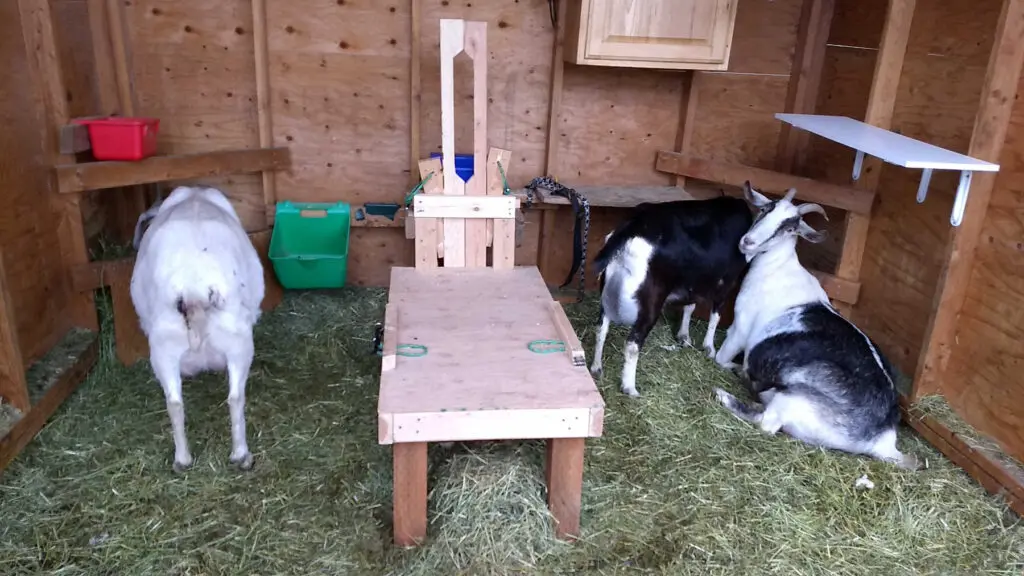
For locking mechanism options see below:
Optional Features for the Goat Stanchion:
For a traditional locking system, drill through both the upright frame and the arms of the head trap system for a pin style closure system.
Variable Head Closure System
For a unique closure system that allows for variable width closure, this design allows for large goats and goats with wide horn structures. See Image Below
Step 1
Make an angled cut removing a 1 ½″ wedge tapering to 4″ from the end of
(2) 24″ 2x4s. These wedges insert on either side of the head catchments between the upright caps to fix the head catchments in place.
Step 2
Adjust the uprights till you find center and mark with a pencil on the wedge at the top of the upright frame.
Step 3
Fasten a wood screw at the mark leaving it exposed about 1/2″ as a stop.
This stop screw keeps the wedges from falling too deep and causing the uprights to sit off center.
Step 4
On the square end of the 24″ wedge pieces, mark and drill a center hole and fasten 2 loops of rope through them for simple removal and storage.
Step 5
Using (2) 3″ wood screws, fasten them on the working side of the stanchion so they stand out half way and function as hooks for the wedge.
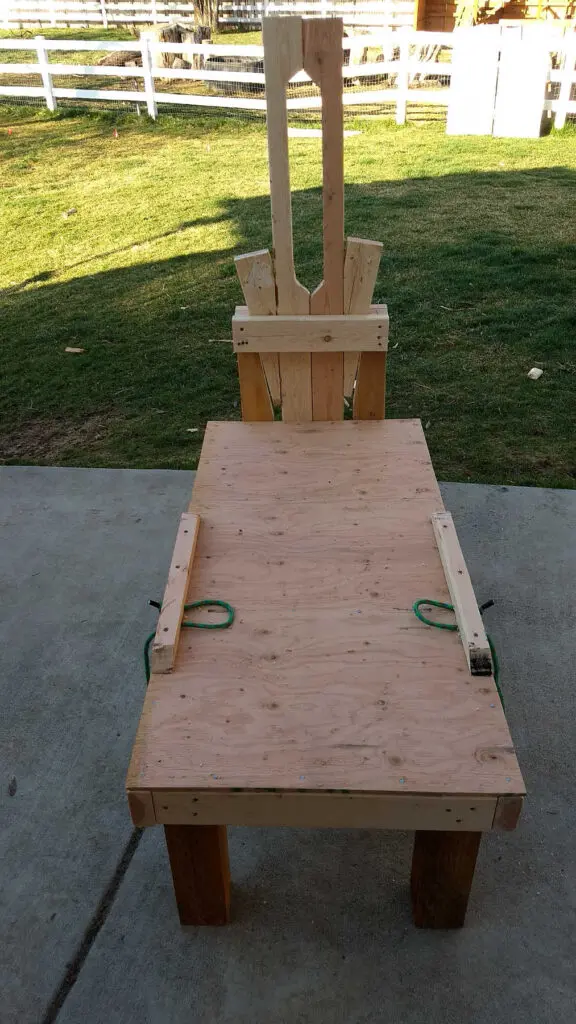
This system creates a variable closure system for large goats and goats with wide necks or horn structures. The wedge locking design allows the uprights to apply light pressure without choking. This system also allows for one-handed operation of the closure system and makes for simple adjustment and operation.
Hoof Trap System
The optional Hoof Trap System allows for goat’s hind feet to be restrained. This is particularly helpful for young milking does that have a tendency to kick relentlessly. It’s not often used but can be a lifesaver when needed.
To use the system, pull a loop of rope through the stop board, make a single twist loop and pass it onto the corresponding hind hoof around the pastern. Pull the tail of the rope through the tension cleat until the necessary tension is achieved. To release, pull outward on the tail of the rope to remove it from the cleat to loosen and remove the loop.
See Image Below
Step 1
From the uprights, measure 34″ back on the platform and 3″ in from each side.
Step 2
Using a 1×1 ½″ strip (using the head catch cut out’s is perfect), fasten the strips at the 34″ mark, 3″ in from each side. The space between the strips should be 19″ even.
Important: Pre-drill the holes for the screws or the strips are likely to split.
Step 3
On each side, measure and mark 3″ and 5″ from the back ends of the strips. Using a ½″ drill bit, drill flush with platform.
Step 4
Using a ½″ utility rope, pass a loop through both holes forming loops toward the inside of the platform. Tie knots on the ends of the rope through the 5″ ends on the outside.
Step 5
Tap and drill a 3/8″ x 1 ½″ long eye lag bolt to the outsides of the platform at 24″ back from the uprights.
Attach the hook-cleat capture to the eyehook and pass the open tail (from the 3″ hole) through the back of the cleat and tie a knot.
The system can now be used to apply locking tension that is easily removed by pulling outward on the rope.
Step 6
For simple convenient storage, unhook both hook-cleats from the eyehooks and clip them together under the stanchion platform. Pull tension on the rope tails to secure.
